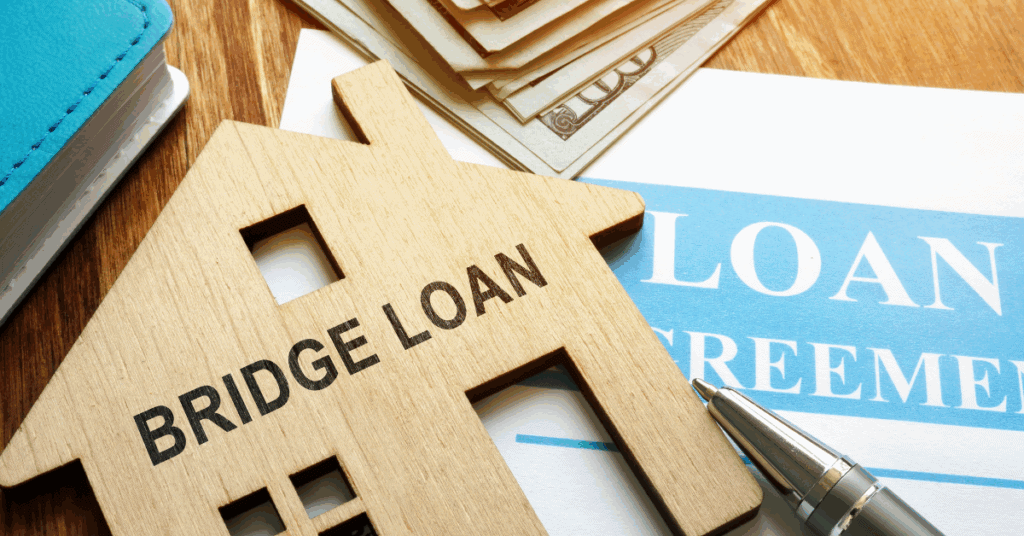What is a Bridge Loan?
A bridge loan is a short-term financing option that helps homeowners buy a new home before selling their current one. It “bridges” the gap between the down payment needed for a new property and the funds tied up in the existing home. This type of loan can be a smart choice in competitive markets where sellers prefer offers without contingencies.
Get Expert Financing
- Matched with investor-friendly lenders
- Fast pre-approvals-no W2s required
- Financing options fro rentals, BRRRR, STRs
- Scale your portfolio with confidence
How Bridge Loans Work
Bridge loans typically offer terms ranging from 6 months to 2 years, providing flexibility for homeowners in transition. Here’s a quick look at how they work:
- Collateral: The loan is secured by your current home or both your current and new homes.
- Loan Amount: Often 70-80% of the combined value of the two properties.
- Repayment: Interest-only payments or deferred payments until your current home sells.
- Rate and Fees: Higher interest rates and closing costs due to the short-term nature.
To see how this compares to other loan types, check out this loan comparison calculator.
Key Benefits of Bridge Loans
Bridge loans offer several advantages, including:
- No Contingency Offers: Make a competitive offer without a home sale contingency.
- Faster Closings: Move quickly in hot real estate markets.
- Flexibility in Timing: Buy first, then sell when the market is right.
- Access to Equity: Use the equity in your current home to secure your new one.
Learn about other home financing options.
Potential Risks and Considerations
While bridge loans can be powerful tools, they also come with some risks:
- Higher Costs: Higher interest rates and fees than traditional mortgages.
- Carrying Two Mortgages: Potential for overlapping payments if your home doesn’t sell quickly.
- Short Repayment Window: Risk of financial strain if the existing home takes longer to sell.
Consider other options like a Home Equity Line of Credit (HELOC) if you need a longer timeline or lower rates.
How to Qualify for a Bridge Loan
To qualify for a bridge loan, you’ll typically need:
- Strong Credit: Most lenders require good to excellent credit.
- Low Debt-to-Income Ratio: A healthy debt-to-income (DTI) ratio is essential.
- Sufficient Equity: Enough home equity to cover the bridge loan amount.
- Clear Exit Strategy: A realistic plan to sell your current home.
Ready to explore your options? Find the perfect bridge loan for your needs.
Alternatives to Bridge Loans
Bridge loans aren’t the only way to secure your next home. Consider these alternatives:
- HELOC or Home Equity Loan: Use your existing equity.
- Cash-Out Refinance: Tap into your current home’s value.
- Personal or Investment Property Loans: Leverage other assets.
Explore your bridge loan vs. HELOC options to see which fits your situation.
FAQs About Bridge Loans
What is the typical interest rate for a bridge loan?
Bridge loan rates vary but are generally higher than conventional mortgages, often ranging from 6% to 12% depending on the lender and market conditions.
Can I get a bridge loan with bad credit?
It’s possible but challenging. Most bridge loan lenders prefer borrowers with good to excellent credit.
How quickly can I get a bridge loan?
Many bridge loans can close in a few weeks, much faster than traditional mortgages.
Read Next
Get Expert Financing
- Matched with investor-friendly lenders
- Fast pre-approvals-no W2s required
- Financing options fro rentals, BRRRR, STRs
- Scale your portfolio with confidence
Our advice is based on experience in the mortgage industry and we are dedicated to helping you achieve your goal of owning a home. We may receive compensation from partner banks when you view mortgage rates listed on our website.
